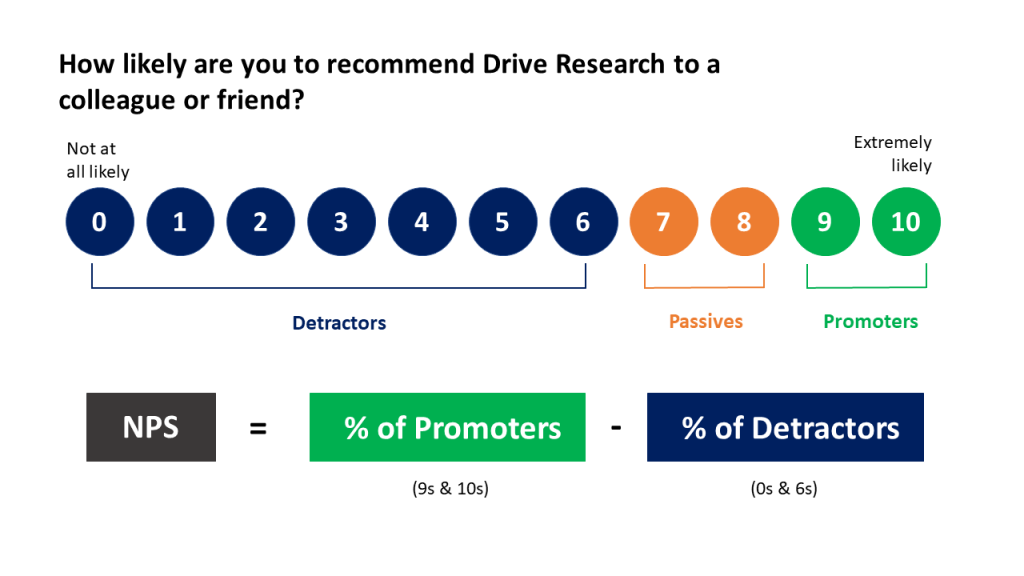
As technology continues to transform the banking industry, more and more customers are turning to online banking solutions. eBanking, or Internet banking, is becoming increasingly popular due to its convenience, speed, and accessibility.
As a result, financial institutions are now recognizing the need to develop effective eBanking marketing strategies that can help them reach and retain their customers in the digital era.
In this blog, we’ll explore marketing strategies that online banks and credit unions can adopt to reach and retain customers.
The Rise of E-Banking: Statistics and Future Growth Projections
E-Banking, also known as online, Internet, or mobile banking, was once a niche way to conduct financial business.
According to a recent survey, as of December 2021, 1.7 million Americans use e-banks as their primary financial institution, marking a 48% increase before the onset of the pandemic in 2019.
In fact, the total market valuation of e-banking was worth $8T by the end of 2021 and is expected to grow at a 5% compounded annual growth rate (CAGR) through 2030, when the total valuation will reach $11T.
And as of 2023, about 27 percent of Americans use an online-only bank. Although reasons driving the growth of e-banking vary, there are advantages that consumers are learning about.
According to Bankrate, the benefits of e-banking include:
- Competitive interest rates
- Lack of monthly fees
- Digital features that make banking easier to manage and in turn, save time and money
As digital transformation continues to reshape the banking industry, e-banking will become more prevalent, leading to increased competition among banks to provide the best digital services to their customers.
Benefits of eBanking Marketing
eBanking marketing strategies have numerous benefits for banks and their customers. Here are some of the key benefits:
- Convenience: Through eBanking marketing, customers can access their account information, make payments, and transfer money without the need to visit a bank branch.
- Personalization: Banks can use customer data obtained through eBanking marketing strategies to understand their preferences, financial goals, and spending habits and offer tailored services that meet their needs.
- Cost-effective: Marketing for digital banks is cost-effective, as it does not require a physical presence, unlike traditional marketing methods. Banks can save on advertising and promotion costs, as they can reach customers through digital channels such as email and social media.
- Reach: eBanking marketing offers a wider reach, as banks can reach customers in different geographical locations. Customers can access eBanking services from anywhere with an internet connection, making it easier for banks to expand their customer base.
- Engagement: Banks and credit unions can use social media and email marketing to engage customers with educational content, promotions, and customer service support.
- Innovation: eBanking marketing drives innovation in the financial services industry. Banks are continually developing new digital services to meet the evolving needs of customers.
eBanking Marketing Strategies
Despite the stated growth and benefits of e-banking, digital-only banks have stiff competition in the United States.
Just how much? Recent research shared by money crashers says there are more than 4,800 FDIC-insured banking institutions domestically that have more than 72,000 total branches.
Because of this competition, online banks will need to find ways to build awareness surrounding the benefits of e-banking, in addition to building their brands.
This is where using eBanking marketing strategies to drive awareness and growth can help.
Here are proven strategies that e-banks can use to learn about their target audience, build awareness among the competition, market the e-banking concept, and enhance user experience:
1. Customer and non-customer surveys
Online surveys fielded to both e-bank customers and non-customers are a logical place to start as far as audience information gathering is concerned. They are perhaps the most common bank and credit union market research option – and for good reason.
Customer surveys
Customer surveys for banks should focus on satisfaction, product/service usage, and user experiences as it pertains to website and app usage.
These findings could be a key barometer to overall satisfaction as well as potentially uncovering areas of opportunity to further develop a portfolio of products or services that are most relevant to members.
Additionally, asking questions around sentiment could be framed up with a Net Promoter Score (NPS) question.
Measuring your bank or credit union’s NPS is also good for establishing a benchmark when comparing future studies.

Non-customer surveys
Alternatively, non-member surveys are equally beneficial and should be added to your list of eBanking marketing strategies.
They allow e-banks to uncover unbiased thoughts and attitudes toward their brand. It’s also a good place to learn about product usage and understand the competitive landscape.
Our financial services market research company finds that gauging what non-customers are looking for in a financial institution also shapes how eBanks should position themselves or their products and services in the marketplace.
2. PR surveys
It takes work and perseverance to stand out in the competition. One effective tool that can help tell the story is PR surveys. This type of survey is a bit different from typical online surveys.
PR surveys are unique because they “flip the script” as the findings of such surveys are shared externally with the intent to educate and build brand awareness versus being shared internally.
Often the results are distributed in the form of press releases, social media posts, and other print, digital, or radio outlets.
The benefits of PR surveys for financial services are profound and can be far-reaching.
When executed correctly, shared content can help build an image of thought leadership. The content can also be useful on the digital front to help increase app downloads – or drive traffic to a website.
Recommended Reading: Using Research to Perfect Your Credit Union Marketing
3. Creating video content
According to Moengage, half of the website visitors “bounce” within 15 seconds.
In addition, research has shown that nearly 3 in 4 (72%) of consumers prefer to watch a video to learn about a product or service rather than other forms of media.
E-banks could take advantage of video offerings to share financial concepts or advice with explainer videos. Examples could cover an array of topics, such as how to save or how to create a budget.
Building a YouTube channel is also a tried-and-true method to share video content. Providing live webinars and Q & A sessions are other ways to educate audiences while simultaneously increasing site and channel engagement.
4. Moderated interviews
Moderated interviews are a form of user experience (UX) research that e-banks can utilize.
They are ideal for gathering firsthand information from a small group of 5 to 15 people in most cases. Normally, participants are recruited from a panel that matches the profile of the ideal consumer.
A moderator then leads the interview by asking participants to complete tasks via remote screen sharing.
These tasks can be as simple as asking a participant to click or link, navigate to a particular page, or even rate their overall satisfaction or experience with a website.
A key benefit to a moderated interview is the small group size allows time to ask probing questions and collect additional feedback from panelists.
5. Unmoderated interviews
Our banking market research company finds that unmoderated interviews are best suited for deploying across a larger panel size of hundreds and even thousands of respondents.
Instead of being guided by a moderator, participants complete a list of tasks while being asked to record their sessions. After the tasks, respondents complete a short survey that helps in collecting additional feedback.
One major benefit is the recorded screen sessions allow the research company to review the sessions multiple times if further analysis is needed.
Recommended Reading: How to Enhance Your eBank’s User Experience
6. SEO optimization
While digital banks will need to promote themselves and build awareness by marketing their bank across multiple channels, the importance of SEO in particular should not be ignored.
SEO, or Search Engine Optimization, is the process of improving website visibility across search engines when users look for online banks, or products and services they provide. The goal of SEO is to increase organic traffic from searches.
SEO is crucial as each year as trillions of searches take place.
It’s estimated that 53% of all organic searches drive all website traffic. Without SEO, search results for e-banks would fall well past pages 2 and 3 or search results – making them less likely to be seen.
If e-banks want to compete with larger “traditional banks, a monthly SEO should be allocated to keep their banks ranked higher in organic search results.
7. Email marketing
Email marketing is a digital marketing strategy that involves sending promotional emails to a list of subscribers or customers to build relationships, promote brand awareness, and drive sales.
eBanks can use email marketing to learn about their target audience by collecting data on their subscribers’ behavior and preferences.
By tracking email open rates, click-through rates, and other metrics, e-banks can gain insights into their customers’ interests and tailor their marketing messages to be more relevant and engaging.
Additionally, mobile banks can use email surveys to collect feedback and gain a deeper understanding of their clients’ needs and preferences.
The use of email newsletters, promotional offers, and educational content can also help to showcase the benefits of online banking, such as 24/7 account access, lower fees, and faster transactions.
8. Social media marketing
Social media marketing refers to the use of social media platforms to promote a brand or business, build relationships with customers, and drive traffic to a website or product.
Social media platforms such as Facebook, Twitter, Instagram, and LinkedIn provide a wealth of data and insights about users’ behavior and interests.
By analyzing this data, e-banks can gain a better understanding of their target audience’s preferences and needs, and tailor their marketing messages accordingly.
Other benefits of using social media as an eBanking marketing strategy include:
- Social media platforms are a great way to get noticed and stand out from the competition. E-banks can create engaging content, such as infographics, videos, or interactive posts, that showcase their unique value proposition and differentiate them from other e-banks in the market.
- E-banks can use social media marketing to educate and inform users about the benefits of e-banking. They can create informative blog posts, webinars, or videos that showcase the advantages of e-banking and answer common questions that users may have.
Final Thoughts
In today’s digital age, online banking has become an essential part of our lives. As more and more people shift towards online banking, banks must have robust eBanking marketing strategies in place to attract and retain customers.
By implementing the eBanking marketing strategies discussed in this post, banks can differentiate themselves from their competitors and create a more engaging and personalized user experience.
From optimizing your website for search engines to leveraging social media channels, there are various ways to reach out to your target audience and enhance your online visibility.
Ultimately, by focusing on building a strong online presence and providing exceptional customer service, your bank can foster long-term relationships with your customers and position itself for success in the ever-evolving world of eBanking.
Contact Our Banking Market Research Company
Drive Research is a market research company that partners with financial institutions across the country.
We have experts that can provide e-banks with data and information to help drive results. Delivering key insights and actionable recommendations is at the heart of what we do.
Are you interested in learning more about our market research services? Contact us today.



